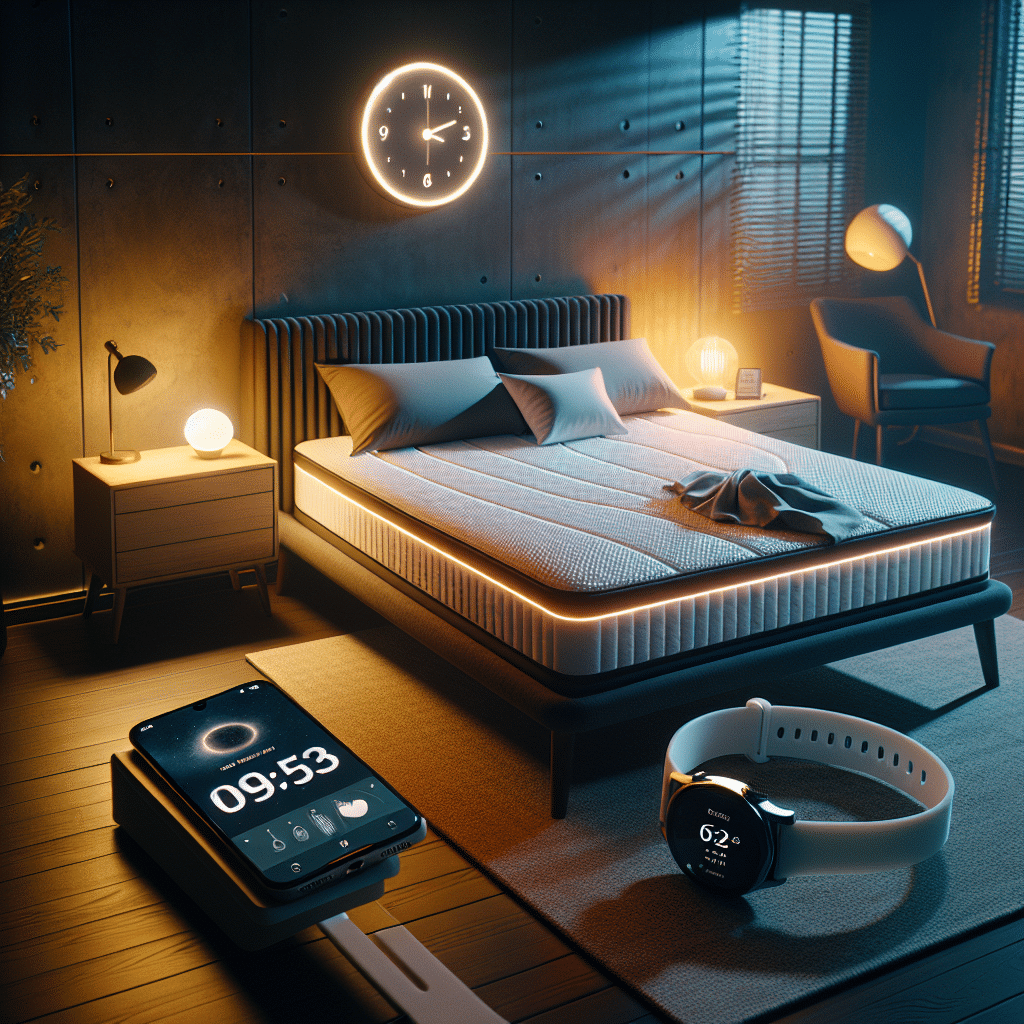How Smart Gadgets Improve Sleep Quality
Understanding Sleep Quality
Sleep quality refers to how well a person sleeps and encompasses several factors, including the duration of sleep, the stages of sleep, and how refreshed one feels upon waking. Poor sleep quality can affect physical health, cognitive performance, and emotional well-being. In an era increasingly dominated by technology, smart gadgets have emerged as influential tools in enhancing sleep quality.
Smart Sleep Trackers
Combining Sleep Metrics
Sleep trackers, typically wristbands or smartwatches, monitor various sleep metrics such as heart rate, movement, and sleep stages (REM, deep, and light sleep). Advanced algorithms analyze this data to provide users with insights into their sleep patterns. Armed with this information, individuals can identify factors disrupting their sleep, such as irregular sleep schedules or environmental disturbances.
Personalized Recommendations
Many sleep trackers offer personalized recommendations based on the collected data. This includes suggested changes in bedtime routines, optimal sleep duration, and lifestyle modifications. By following these suggestions, users can adopt healthier habits that promote sound sleep.
Smart Mattresses
Sleep Technology Integration
Smart mattresses come equipped with sensors that detect body movements and temperature fluctuations. They can adjust firmness and support levels based on the user’s sleep position, thereby enhancing comfort. Some mattresses even feature built-in temperature regulation, allowing sleepers to maintain a comfortable climate throughout the night, which is essential for optimal sleep quality.
Sleep Environment Adaptation
These mattresses often connect to smart home systems, integrating with other devices to create an optimal sleep environment. For example, they might work in conjunction with smart thermostats to adjust room temperature automatically as the night progresses, ensuring an ideal sleeping condition.
Smart Pillows
Customizable Support
Smart pillows mold to the sleeper’s head and neck, providing tailored support. Some models come with built-in speakers that play soothing sounds or white noise, creating a calming auditory environment conducive to falling asleep. Additionally, features such as adjustable height help users find their optimal neck position, which can alleviate discomfort and promote restorative sleep.
Sleep Position Monitoring
Certain smart pillows monitor sleep positions, alerting users when they may shift into postures disrupt their sleep quality (like sleeping on their backs, which can exacerbate snoring). By providing feedback, these pillows encourage healthier sleeping habits.
Sleep-Enhancing Light Systems
Circadian Rhythm Regulation
Smart lights can simulate natural sunlight patterns, which help regulate circadian rhythms. As daylight diminishes, these smart systems gradually shift the light’s hue to warmer tones, signaling to the body that it is time to wind down. By using such lighting systems in the evening, users can effectively enhance their ability to fall asleep.
Alarms That Mimic Sunrise
Some smart lighting systems feature alarm functions that gradually increase light intensity at predetermined wake-up times, mimicking a natural sunrise. This gentle rise in light can facilitate smoother awakenings, reducing grogginess and ensuring individuals feel more refreshed and ready to start the day.
Sleep Apps
Meditation and Relaxation Tools
Numerous sleep apps offer guided meditation, breathing exercises, or ambient sounds aimed at promoting relaxation before bed. Users can select programs tailored to their preferences, enhancing their ability to unwind and prepare for sleep. The soothing audio and structured techniques can help reduce anxiety and make it easier to drift off.
Sleep Diaries and Behavioral Insights
Sleep applications can track bedtime routines, caffeine consumption, and daily stress levels. By analyzing these behaviors against sleep quality over time, users can identify trends that negatively affect their rest. This data-driven approach empowers individuals to make science-backed lifestyle adjustments that can substantially improve sleep quality.
Smart Home Integration
Automation for a Better Sleep Environment
Smart home devices can be integrated to automate the pre-sleep environment, enhancing comfort. For example, users can set routines where lights dim, thermostats adjust, and soft music begins playing at a designated bedtime. This holistic approach minimizes distractions and fosters tranquility.
Enhanced Security
Smart security systems can improve sleep quality by providing peace of mind. Knowing that one’s home is secure allows for deeper, uninterrupted sleep. With capabilities like motion detection, door sensors, and remote monitoring, smart home security can significantly reduce anxiety about potential disturbances.
Reducing Blue Light Exposure
Smart Displays and Screen Adjustments
Repeated exposure to blue light emitted by phones and tablets can disrupt melatonin production, hampering sleep quality. Smart gadgets can now filter blue light, adjusting the display settings based on the time of day. This eases eye strain and promotes a healthier sleep environment by signaling the body to wind down.
Digital Wellbeing Features
Many devices have included features to remind users to take breaks from screens, ultimately aiding in reducing screen time before bed. By promoting healthier usage habits, these tools can play an instrumental role in fostering better sleep hygiene.
Sleep Coaching Programs
Tailored Guidance
Some smart sleep gadgets come equipped with innovative sleep coaching programs that personalize sleep strategies. These systems may offer step-by-step plans that include changes to bedtime routines, optimal wake-up times, and suggestions for managing external factors that affect sleep quality.
Continuous Feedback Loop
Using the data collected over time, these coaching programs can adjust strategies based on users’ evolving sleep patterns, providing continuous support and motivation. This personalized approach holds users accountable while equipping them with tools to improve their sleep experiences.
Final Thoughts
The integration of smart gadgets into our sleep routines represents a significant leap towards improving sleep quality. From detailed tracking and personalized coaching to environmental adjustments, technology plays a pivotal role in equipping individuals with the tools to enhance their nightly rest. As these devices become ever more sophisticated, they will continue to transform our understanding and experience of sleep, leading to healthier lifestyles and improved well-being.
